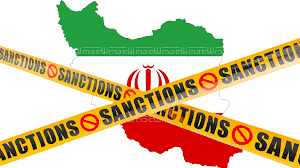
By Amna Nisar Abbasi
Three decades of increasingly restrictive economic restrictions imposed on the Islamic Republic of Iran by Washington have failed to date to achieve their stated objectives of moderating Iranian policies on the key areas of American concern. While there are promising indications of a more conducive context for sanctions today, that is no guarantee of success.
Less than a year after the Obama administration began its tenure with unprecedented overtures aimed at engaging Tehran in a comprehensive diplomatic dialogue, the discourse in Washington and around the world shifted away from engagement toward an enthusiastic embrace of punitive measures. This shift attributed to the dramatic developments within Iran since its blatantly manipulated presidential election in 2017.
Those developments have splintered Iran’s leadership, further alienated its people, and generated the most vigorous popular movement for political change to confront the Islamic regime since the 1979 revolution that brought it to power. Those domestic dynamics have outraged and inspired the international community and added new impetus to the longstanding concerns about the regime’s policies at home and abroad.
Iran’s supreme leader, Ayatollah Ali Khamenei, and its former president, Mahmoud Ahmadinejad, have inveighed against negotiations as a deceitful ploy intended to rob Iran of its resources and rights and have scuttled a preliminary agreement initially endorsed by their own representatives that would have temporarily mitigated international concerns about Iran’s nuclear ambitions. After this action the US imposed a list of sanctions on Iranian products irrespective of companies and investors origin.
Under the umbrella of sanctions imposed by the US, the Iranian authorities have adopted a comprehensive strategy encompassing market-based reforms as reflected in the government’s 20-year vision document and the sixth five-year development plan for the 2016-2021 period, comprised of three pillars, namely, the development of a resilient economy, progress in science and technology, and the promotion of cultural excellence.
On the economic front, the development plan envisages an annual economic growth rate of 8 percent and reforms of state-owned enterprises, the financial and banking sector, and the allocation and management of oil revenues among the main priorities of the government during the five-year period.
Whereas, the Iranian economy experienced a downward trajectory on oil exports that fell to half of their 2017/18 levels following the phased reintroduction of US sanctions which culminated in November 2018. The economy is expected to contract by 1.4 percent on average between 2017/18-2020/21, experiencing a fall in exports and consumption on the demand side and a contraction of the industry sector on the supply side.
The country is still surviving because there are few countries that are dependent on Iran’s natural resources and by using other mechanisms of trade in the wake of US sanctions they are doing businesses. The Covid-19 (Corona virus) disaster in 2020 hit the economy and health sectors of all the major powers but Iran survived despite enormous sanctions on its health sector.
To overcome with such crushing economic phase; First Vice-President Es’haq Jahangiri said business units based in Iran’s free trade zones can use the 500 Trillion Rials (about US$11.9 billion) of facilities that the government is providing to compensate the economic damages of the corona virus outbreak.
The price of embarking upon another frustrating failed approach to blunting Tehran’s most destabilizing policies is not insubstantial; if sanctions fail, the available alternatives (military force or externally orchestrated regime change) portend much more dismal prospects for American interests and regional stability.
The urgency surrounding Iran’s nuclear program and Tehran’s apparent determination to continue expanding its nuclear activities demands that the international community’s revised approach to Iran is framed in such a way that maximizes its prospects for achieving even the minimalist goal of decelerating Tehran’s course on this issue.
Equally important, as serious discussion of more rigorous sanctions gets underway, the implications of any new measures for the future of Iran’s nascent democracy movement and for their drowning economy must be considered.
Beijing’s recent multibillion dollar project agreements with Iran have opened a new door not only in terms of trade but also China is emerging as a new ally of Iran. The US sanctions are becoming opportunity for Iran to explore other trade partners and the amount of US pressure cannot cripple Iran’s economy now, if China does not want it to happen.
Therefore, the opportunity to discuss the prospects and implications of sanctions as a tool for influencing the policies of the Islamic Republic of Iran, and amidst the renewed clamor for coercive measures, it is important to note that sanctions do not promise inherently better results for advancing U.S. policy outcomes than any other element in the toolkit.
The author is a research fellow at the Institute of Regional Studies in Islamabad. She can be reached @[email protected]






















